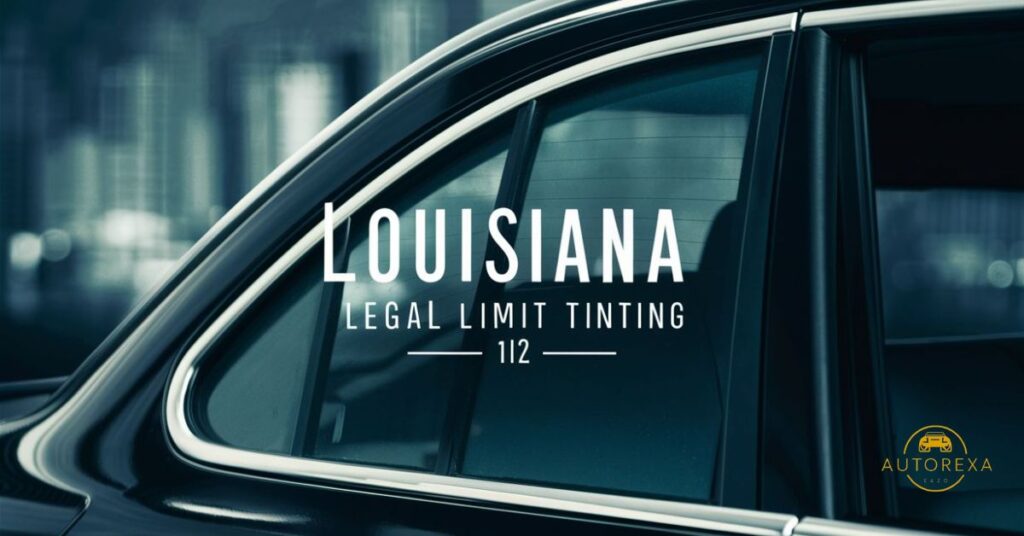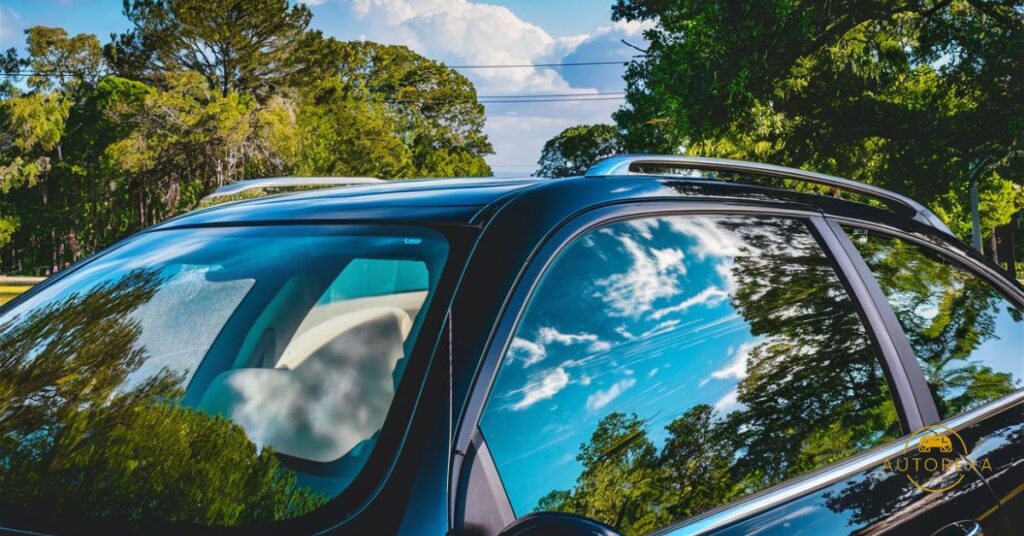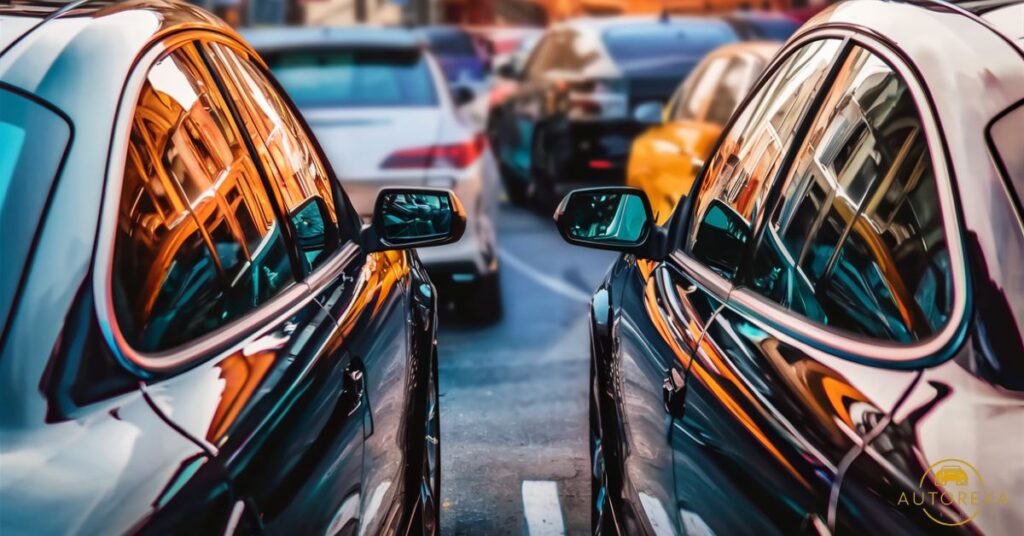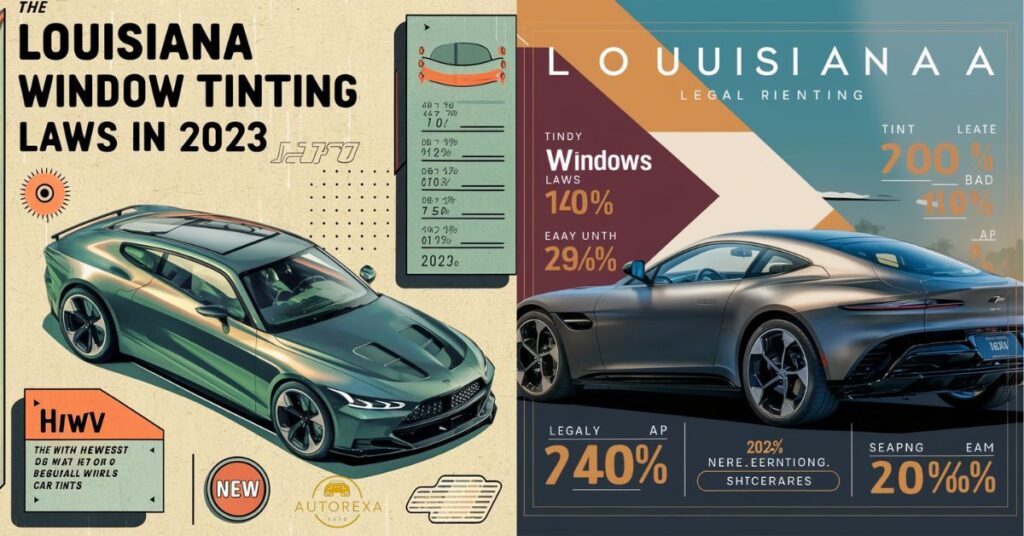In 2023, Louisiana’s window tinting laws regulate the permissible tint levels for vehicle windows to ensure driver visibility and safety.
For sedans, the front side windows must allow more than 40% of light in, while the back side and rear windows must permit over 25% light transmission.
SUVs and vans have slightly different requirements, with the front side windows needing over 40% light transmission, and the back side and rear windows requiring more than 12% light transmission.
Reflective or mirrored tints are prohibited on all vehicles. Medical exemptions are available for individuals with specific conditions, allowing for darker tints with proper documentation.
Understanding Visible Light Transmission (VLT)

VLT, or Visible Light Transmission, is a crucial factor in determining the darkness or lightness of window tint, essential for both aesthetics and functionality.
It is measured as a percentage, indicating the amount of visible light that can pass through the tinted window, offering insights into how much natural light and heat are blocked.
A higher VLT percentage means more light can pass through, resulting in lighter tint, while a lower percentage indicates darker tint with less light transmission, affecting visibility and privacy levels.
How dark can your window tint be in Louisiana?

In Louisiana, window tint laws dictate specific darkness levels for vehicle windows. The regulations stipulate that front-side windows must allow at least 40% of light to pass through, ensuring adequate visibility for both drivers and law enforcement.
For back-side windows, including rear windows, Louisiana permits a darker tint, allowing as little as 25% of light transmission. However, this darker tint is still subject to restrictions to maintain safety standards on the road.
While drivers may prefer darker tints for privacy and aesthetic reasons it is crucial to adhere to Louisiana’s laws to avoid potential fines or penalties. By following these regulations, drivers can strike a balance between style and safety on the road.
Tint darkness for passenger vehicles
In Louisiana tint darkness regulations vary depending on the type of vehicle.
- For passenger vehicles front-side windows must allow at least 40% of light transmission.
- Back-side windows can have a darker tint, allowing as little as 25% of light transmission.
- These regulations aim to balance privacy and visibility for drivers and passengers.
- It is important for car owners to adhere to these laws to avoid fines or penalties.
Tint darkness for multi-purpose vehicles
Multi-purpose vehicles in Louisiana have specific regulations regarding tint darkness.
- Front-side windows must allow at least 40% of light transmission.
- Back-side windows can have a darker tint, permitting as little as 25% of light transmission.
Related Post:
How reflective can your window tint be in Louisiana?

Louisiana’s regulations stipulate that window tint reflectivity should not exceed 20%, prioritizing safety on the road. This measure ensures clear visibility for both drivers and law enforcement, contributing to overall road safety.
“Louisiana Window Tinting Laws – 2023 New Car Tint Laws in Louisiana” mandate limiting window tint reflectivity to 20%. This regulation aims to enhance visibility, especially in low-light or adverse weather conditions. It facilitates safer driving experiences and enables law enforcement officials to monitor vehicles effectively.
Adhering to Louisiana’s regulations regarding window tint reflectivity is crucial for maintaining safety on the road. With clear visibility ensured by the 20% maximum reflectivity, drivers can confidently enjoy the benefits of tinted windows while staying compliant with the law.
Tint reflection for sedans
Louisiana’s regulations set standards for window tint reflectivity to uphold safety on the roads.
- These laws aim to balance privacy and visibility, ensuring drivers can see clearly and law enforcement can maintain visibility into vehicles.
- The guidelines specify that window tint should not exceed 20% reflectivity to maintain optimal visibility for drivers and law enforcement officers.
- Compliance with these regulations helps prevent accidents and ensures safe driving conditions for everyone on the road.
- Window tint installers and vehicle owners must adhere to these standards to avoid fines and penalties.
Tint reflection for SUV and vans
Louisiana regulations extend to SUVs and vans, covering the reflectivity of their window tint.
- The purpose of these laws is to maintain safety on the roads, ensuring that drivers and law enforcement have clear visibility.
- Similar to sedans, the window tint for SUVs and vans should adhere to a maximum of 20% reflectivity to prioritize visibility and safety.
Louisiana Window Tint Law – Regulations
Louisiana’s window tint laws set standards to maintain road safety while providing drivers with privacy and comfort. Compliance with these regulations is essential to ensure optimal visibility for both drivers and law enforcement.
These rules are designed to strike a balance between privacy, protection, and visibility on the road. They help prevent accidents and facilitate law enforcement activities by ensuring clear visibility.
Ensuring compliance with Louisiana’s window tint laws, drivers contribute to safer road conditions and smoother law enforcement operations. These regulations prioritize safety while allowing drivers to enjoy the benefits of tinted windows.
Also read this blog:
Virginia Car Window Tinting Laws – 2023 New Car Tint Laws in VA
Louisiana Tint Laws – Exemption

Louisiana Tint Laws include exemptions for specific vehicle types and medical conditions. These exemptions allow for slightly darker window tints. Understanding these exceptions is crucial for vehicle owners. Proper knowledge ensures legal compliance and prevents unnecessary fines.
Medical Exemption for Window Tint in Louisiana
In Louisiana, individuals with certain medical conditions can obtain exemptions for darker window tints. These conditions may include light sensitivity or skin conditions exacerbated by sunlight. Medical professionals must provide documentation to support the exemption.
Side mirrors

These are given below Side Mirror laws in Louisiana.
- Louisiana law requires vehicles to have two operational side mirrors.
- Side mirrors are essential for providing visibility to drivers, enhancing safe vehicle operation.
- Non-compliance with this law can result in fines or other legal penalties.
Color Tint
Louisiana laws govern the allowable color tint for vehicle windows.
- Color tint refers to the hue or shade of window film.
- It ranges from light to dark and affects visibility and heat absorption.
Benefits of Window Tinting
This table provides a concise overview of the various benefits that window tinting offers for cars.
| Benefit | Description |
| Heat Reduction | Window tinting helps reduce the amount of heat entering the car, keeping the interior cooler. |
| UV Protection | Tinted windows block harmful UV rays, protecting passengers and preserving the car’s interior. |
| Glare Reduction | Tinted windows reduce glare from the sun and headlights, improving visibility and safety. |
| Privacy | Tinted windows offer privacy by limiting visibility into the car, enhancing security and comfort. |
| Interior Protection | Tinting helps prevent fading and cracking of upholstery and dashboard by blocking UV radiation. |
| Enhanced Aesthetics | Window tinting adds a sleek, stylish look to the vehicle, enhancing its overall appearance. |
Other Louisiana tinting rules and regulations
Louisiana law mandates side mirrors on vehicles with tinted windows, ensuring proper visibility and enhancing safety by reducing blind spots.
Tinting is prohibited on the front windshield, except for a five-inch strip along the top, known as the “sun visor” or “eyebrow,” ensuring an unobstructed view for drivers.
Louisiana prohibits certain colors and reflective materials for window tinting, such as red, amber, yellow, and excessively reflective or mirrored tints, to maintain uniformity and safety standards.
State of Louisiana Info

Louisiana: A state brimming with cultural richness and natural wonders, situated in the southern United States.
Capital: Baton Rouge
Leading City: New Orleans, renowned for its vibrant music scene, historic architecture, and lively festivals.
Population: Over 4.6 million residents call Louisiana home, enjoying a blend of French, Spanish, African, and Creole influences.
Area: The state has a total area of about 51,885 sq. mi (134,382 km). Louisiana is the 25th largest state by population and the 31st largest state by area.
Frequently asked questions
Are there any restrictions on reflective tint in Louisiana?
Yes, Louisiana law limits the reflectivity of window tint to 20% to ensure clear visibility for drivers and law enforcement.
Do I need a medical exemption for darker window tint in Louisiana?
Yes, you can apply for a medical exemption if you require darker window tint for medical reasons.
Can I tint my windshield in Louisiana?
Yes you can tint the top 5 inches of your windshield in Louisiana, as long as it does not extend below the AS-1 line.
Are there any penalties for violating Louisiana window tint laws?
Yes, violating Louisiana window tint laws can result in fines and potentially having to remove the illegal tint from your vehicle.
Conclusion
Window Tint Darkness: Louisiana law specifies different VLT (Visible Light Transmission) percentages for various windows.
Front Side Windows: Must allow over 40% light in.
Back Side Windows: Must allow over 25% light in.
Rear Window: Must allow over 12% light in.
Windshield: Tinting is only allowed on the top five inches.
Reflectivity: Tint cannot be more reflective than a standard window.
Medical Exemptions: Available with proper documentation.
Penalties: Non-compliance may result in fines.
Certification: Tint manufacturers must certify their film meets Louisiana standards.
Sticker Requirement: Legal tint must have a certification sticker.







